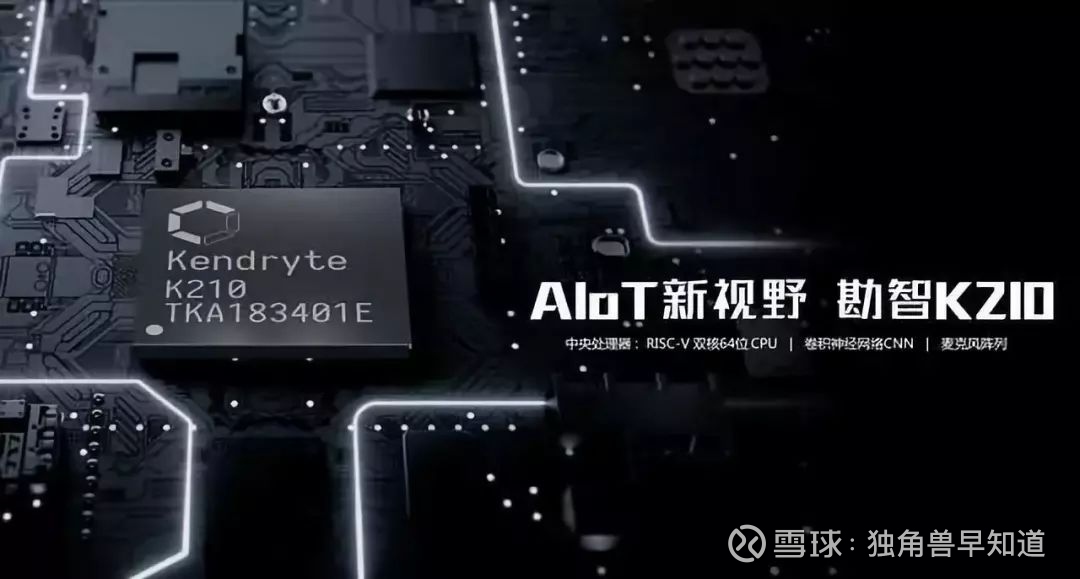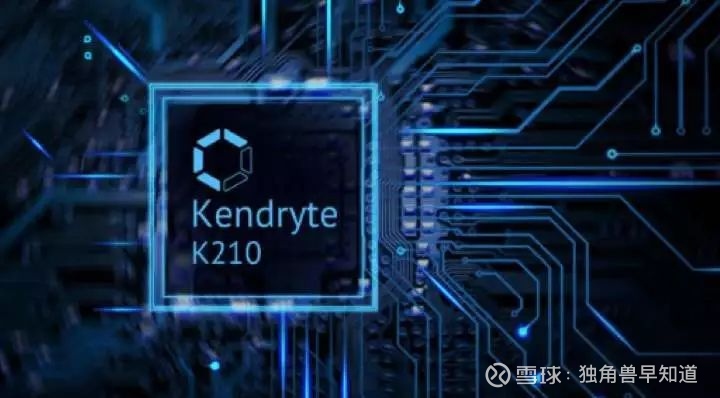Jia Nan Zhi Zhi has completed the pre-road show and is expected to land on NASDAQ on November 20th.
Source: Unicorn knows
According to the unicorns (ID: iponews) exclusive source, Jia Nan Zhi Zhi has completed the pre-road show, is expected to land on NASDAQ on November 20.
On November 12th, the news that Kong Jianping, the chairman of Jianan Yuzhi, has started to send invitations has spread widely on the Internet. Jianan Zhizhi said that the company has absolutely no invitation to post, "focus on research and development."
Kong Jianping himself also issued a message in the circle of friends, "What kind of invitation is this, who can send me to study."
- CME Group: Bitcoin options will be launched on January 13, 2020
- The ant blockchain behind the double 11 carnival: traces 400 million cross-border goods, copyright deposits help sellers defend rights
- Nearly half of the top 50 Chinese Internet companies are “outsiders” in the blockchain?

The edge AI chip, the KIT K210, independently developed by Jianan Canaan, has formed a sales scale. As of September 30, 2019, the company has delivered more than 53,000 chips and development modules to AI product developers, and with more than 30 AI algorithms. The company works to develop an integrated AI solution for end consumers.
According to the prospectus, in September 2018, Jianan Canaan officially released the first generation of AI chip Kanzhi K210, and officially launched the commercialization of the chip in March this year. The release of the chip also means that Jianan Canaan is the first company in the world to master the independent intellectual property rights of commercial edge AI chips in RISC-V architecture.

From the beginning of research and development in 2016 to the large-scale commercialization this year, Jianan Canaan, who has gone through three years of self-developed core road, has finally achieved great results. At the same time, Jia Nan Canaan also clarified the AI chip research and development route, of which the second generation chip Kanzhi K510 is expected to achieve mass production in the first quarter of next year, and the third generation chip is applicable to the cloud and edge side two scenes.
RISC-V architecture is fully suitable for edge side scenes
Since 2016, the breakthrough of deep learning has promoted the entry of artificial intelligence into the industry, which has opened the prelude to the battle for AI chips.
The AI chip is mainly oriented to two major application scenarios. One is the cloud. The training of the algorithm model requires the throughput of massive data, and is usually deployed in the data center to obtain sufficient computing power. The other type is the edge-side scenario. The device needs to perform data reasoning based on the trained algorithm model, which is mainly for the improvement of computational efficiency.

Edge computing refers to the side of the object or data source, using an open platform that combines the core capabilities of networking, computing, storage, and applications to provide near-end services. Its applications are launched on the edge side, resulting in faster network service response, meeting the industry's basic needs for real-time business, application intelligence, security and privacy protection.
From a technical point of view, RISC-V has the advantages of streamlining, low power consumption, modularity and scalability, so it is especially suitable for the edge computing field of applications such as closed or semi-closed, embedded artificial intelligence with relatively small ecological dependence. , bringing significant flexibility and cost advantages to the IoT industry.
Anchor the edge side market, open the AI chip self-developed road
Considering the limitation of power consumption and computing power on the edge side scene, Jianan Canaan developed the chip based on the RISC-V architecture from the beginning, so that the chip can flexibly expand the instructions according to the actual scene requirements and enhance the programmability of the product. At the same time, thanks to the lightweight nature of the RISC-V architecture, the Kanji K210 can perform data processing at lower power consumption.
Thanks to the open source nature of the RISC-V architecture, Jianan Canaan is able to develop independent intellectual property rights on this basis.

Among them, the core network accelerator KPU of the Jizhi series chip is completely based on self-research, which not only accelerates the reasoning of CNN, but also accelerates the traditional image algorithm based on convolution operator. At the same time, KPU supports algorithm models such as TinyYOLOv2, which can provide an exploration platform for leading edge technologies such as TinyML.
In the prospectus, Jianan Canaan said that the development of artificial intelligence technology, especially related to edge computing, and the acceptance of ASIC in artificial intelligence applications are crucial to the company's future success in product diversification.
The reason why Jianan Canaan chose the edge-side market as the entry point of the AI chip is mainly due to two points: on the one hand, the cloud chip track is overheated, and Nvidia, Google, Amazon and other giants have launched their own cloud AI development platform and accelerated solution. The program also began to extend to the end side, such as the TPU released by Google. On the other hand, compared with the cloud, the edge-side market is still in the blue ocean. Especially in China, many so-called end-side smart devices have not yet performed tasks according to the AI algorithm.
Kanji K210 landing ability
For the AI chip's landing, Jia Nanan chairman and CEO Zhang Nanxuan once said, "To do things must go to profit, Jia Nan Canaan is not rushing to play, companies, companies must make money, but also clearly depends on the business itself To make money, we can't rely on government subsidies. The same is true for AI. Jianan Canaan is also exploring profit closure. Our first generation chips are trying to fit the application scenarios to help customers solve practical problems."
The commercialization of Jianan Canaan AI chip was officially launched in March this year. As of September 30 this year, the company shipped more than 53,000 chips and development kits to AI product developers within six months. Its first generation AI chip, the KIT K210, has been deployed in smart buildings, smart homes, smart energy consumption and smart agroforestry.
In the field of intelligent buildings, the non-inductive access control system developed by Jianan Canaan largely compensates for the gap in domestic technology in this field. The access control system is based on its self-developed generation of edge-side AI chip Kanzhi K210, which supports offline data storage and processing. It can store 10,000 face information and 20,000 door opening records on the edge side, and directly upload face feature values in local calculation mode. As a result of the text, there is no need to build a back-end server cluster and a private cloud.

(Source: Know)
In the smart home scenario, user privacy is a challenge for current AI devices. The smart door lock module provided by Jianan Canaan can directly extract the feature values of face images on the end side without uploading the cloud. Since the power consumption of the KIT is only 0.3W, the battery replacement frequency is about one year, so there is also the ability to land on a large scale in hotels and other scenarios.
In the largest community in Asia, Guiyang Nanminghua Orchard, the layout of high-rise buildings is dense, the service area is large, and the floating population is large. The traditional energy consumption data cannot be fully grasped by traditional meter reading. In order to solve the problem of “high cost, low efficiency and difficult to enter the household” in the traditional meter reading mode, Jianan Canaan Technology deployed the intelligent object and the running-in using the external edge computing device, which can process the electricity in real time through the CNN algorithm of the energy meter. Gas data.
In the business scenario of controlling forest pests and diseases, Jianan Canaan cooperated with Baidu and Beijing Forestry University to insert audio processing hardware with 8-channel high-performance microphone array into the tree, using the sound of insect bites to identify the pests. position.
At the same time, Jianan Canaan fully utilized the visual capabilities of the K210 chip, placed the chip into a 40mm square smart box, and judged whether there were harmful insects in the field of view through image classification and detection. This method of comprehensive judgment of audio-visual effectively improves the efficiency and accuracy of judgment, and has a wide range of application scenarios in forestry and farmland.
Clear AI chip development plan
For the future development of AI chips, Jianan Canaan disclosed its route planning in the field of artificial intelligence chips in the prospectus.
According to the prospectus, Jianan is currently developing a second-generation 28nm AI chip. Compared with the previous generation of products, the new chip is developed for 5G scenes, and greatly enhances computing power and energy efficiency, and will be used for exploring new scenes such as smart retail and smart driving. Mass production of the second generation chips is expected to begin in the first quarter of 2020. In addition, the company plans to introduce third-generation 12nm AI chips in the second half of 2020, which is expected to be applicable to edge and cloud computing.
Kana Nan said that the company's mission is to enable everyone to enjoy the benefits of supercomputing, and to make blockchain and AI technology widely adopted to improve people's lives.
We will continue to update Blocking; if you have any questions or suggestions, please contact us!
Was this article helpful?
93 out of 132 found this helpful
Related articles
- Double 11: The best training ground for e-commerce giants' blockchain traceability
- Bitcoin's death loyalty, Twitter CEO promotes bitcoin in Africa, meets with fans
- Technical Guide | Understanding Zk-stark for Zero Knowledge Proof Algorithm
- Dialogue with Hong Ning: The areas where the blockchain is most likely to have a disruptive impact are banks and media.
- Popular science | Privacy protection is worrying? Encrypted data warehouses show their talents (core use cases and requirements analysis)
- Jianan will be listed, and these 20 A-share “mining concept stocks” will know in advance?
- The World Blockchain Conference closed, we discovered these new phenomena






